Stunning Images From The UK Wildscreen Festival 2016, The Internationally Renowned Festival That Celebrates And Advances The Art Of Natural World Storytelling
The Wildscreen festival is the world’s biggest celebration of screen-based natural history storytelling which takes place every two years in Bristol.
“Bristol Fox”
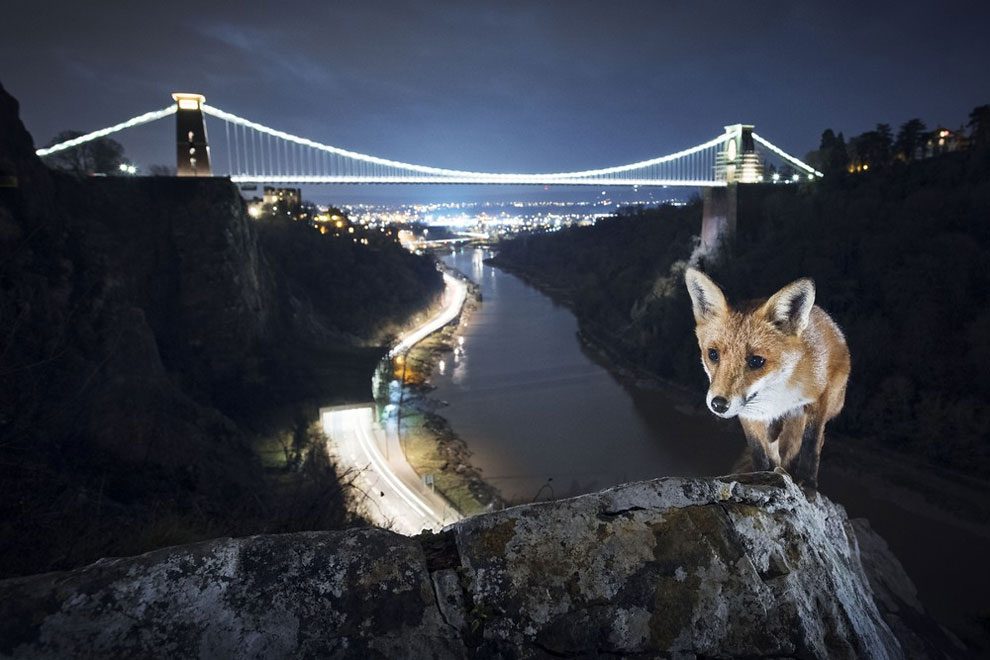
“At this recognisable landmark in front of the Clifton suspension bridge I found a secluded spot where teenagers like to hang out and local foxes would come to look for leftovers. One night, I was setting up my camera in the early evening and a fox came out of the shadows. It came straight over, looked up at me, then proceeded to try and pinch something from my open camera bag. After that, it walked up this small ridge and I saw the picture I wanted to capture. It took about two weeks of long, cold nights before it looked up at just the right moment”. (Photo by Sam Hobson/Wildscreen 2016)
More info: Wildscreen Festival
“Walrus in Midnight Sun”
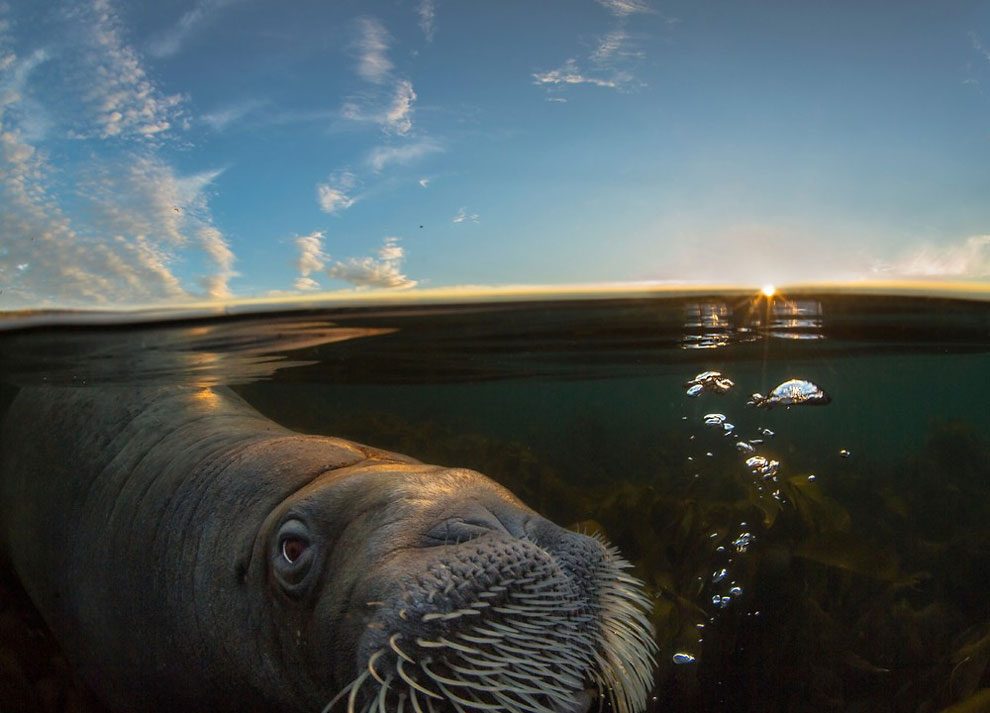
Walrus feed mostly on bivalves in productive, shallow and often sandy habitats in the Arctic. This individual, though, arrived on a beach outside Tromsø, northern Norway, and found comfort on a stranded dead sperm whale. After two weeks he approached Audun, and only half a metre away he stretched his tusk forward and touched his hand gently. “This was one of the most memorable moments of my life”, Rikardsen says. He named the 500kg male Buddy. After two months, the dead whale was decomposed and Buddy suddenly disappeared. (Photo by Audun Rikardsen/Wildscreen 2016)
“Seeing the Invisible”
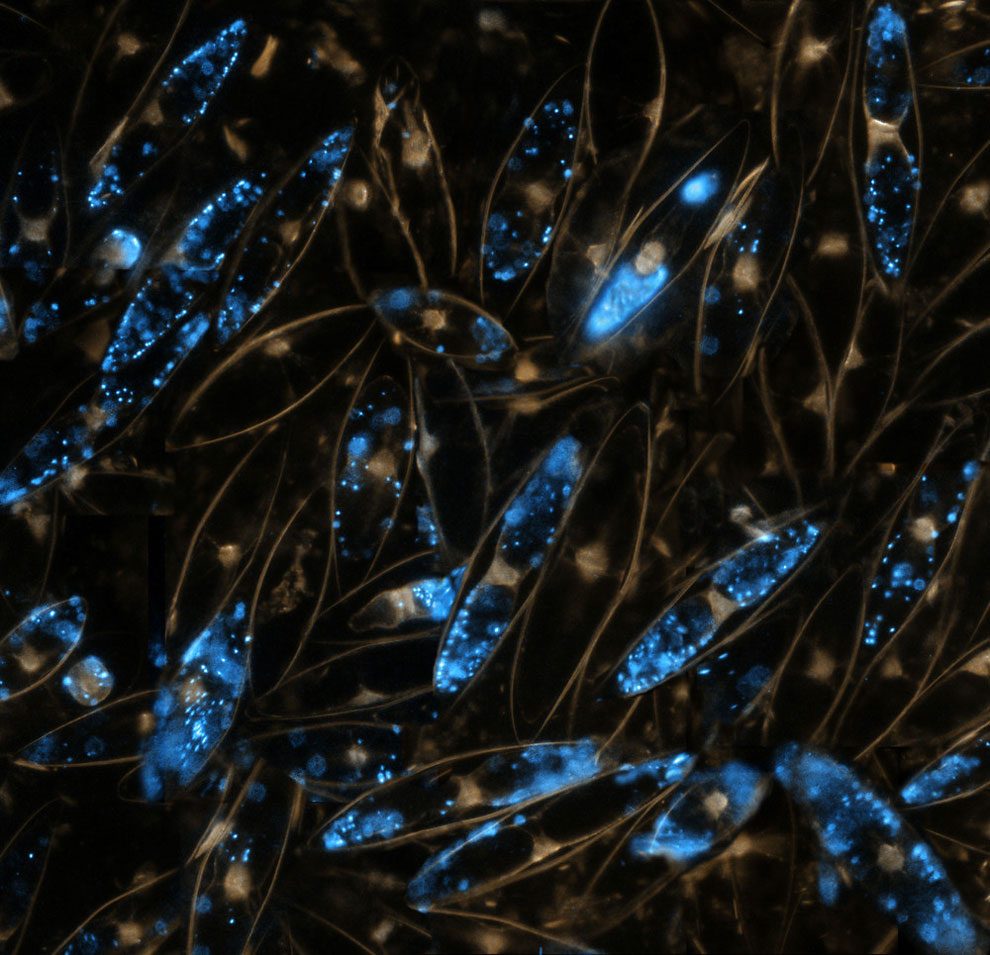
These are one of the many species of dinoflagellate whose beautiful blue flashes light up oceans on dark nights. Their light is produced in special “organelles” within the 1/2mm single-celled organisms, but only when they are disturbed. Trying to get them in focus in a microscope whilst disturbing them so they will flash took hours of trial and error, but the biggest problem was simply having a camera sensitive enough to record the flash. (Photo by Martin Dohrn/Wildscreen 2016)
“Lynx on the Brink”
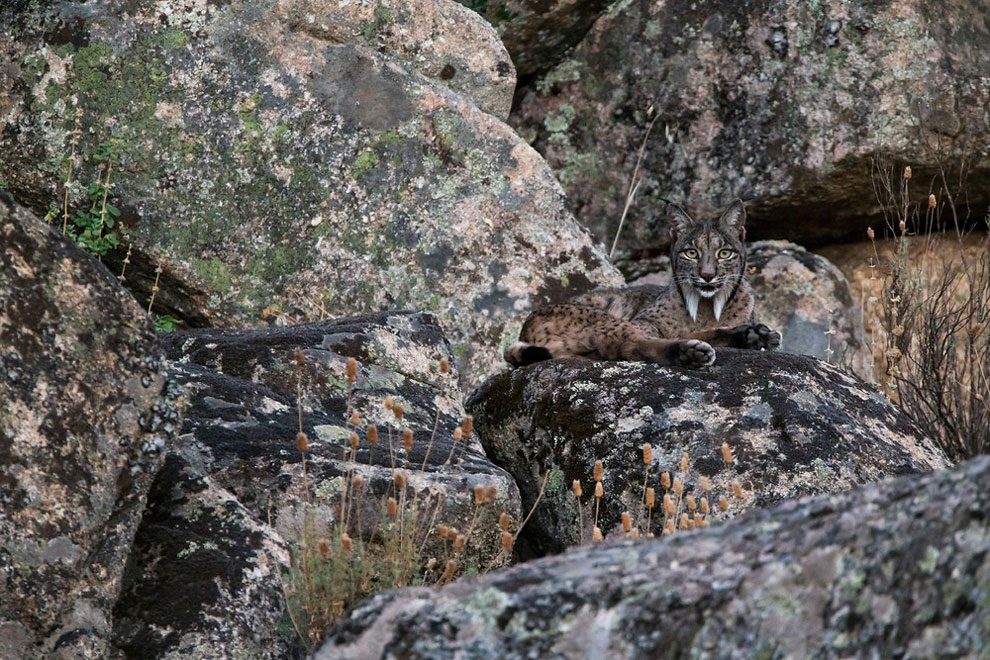
“In 2001 there were less than 100 Iberian lynx left in the wild. Fifteen years later there are now more than 400, but it is still, unfortunately, the rarest cat in the world. Predominantly nocturnal, the lynx were tricky to find, and as this picture shows, they’re perfectly suited for the rocky landscapes they call home, blending seamlessly into the boulder-strewn landscape. When you do find one there is no real way of describing the elation of being in the presence of such a stunning and rare cat”. (Photo by Luke Massey/Wildscreen 2016)
“The Panda of Spiders”
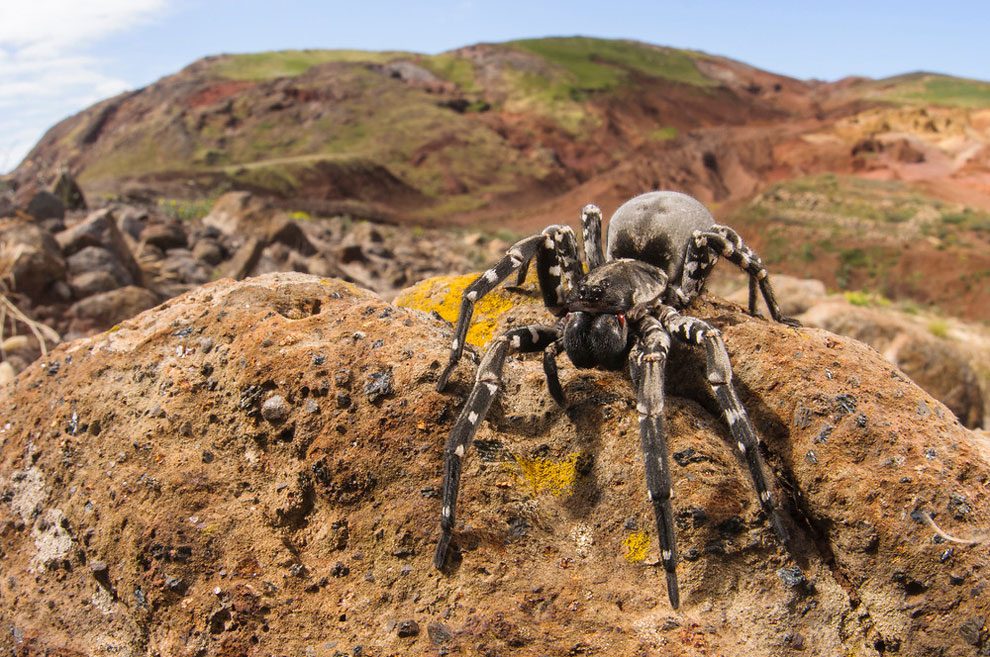
“When I discovered that the biggest wolf spider of Europe, perhaps the biggest in the world, lived in a single very small valley on a very small island of the Madeira archipelago I craved to see it in person and tell its story. But it’s a bittersweet story, because this “panda of spiders” is listed as critically endangered on the IUCN Red List and conservation efforts are being carried out to ensure its survival. A small colony has been taken in at Bristol Zoo Gardens as part of their conservation programme”. (Photo by Emanuele Biggi/Wildscreen 2016)
“Motherhood”
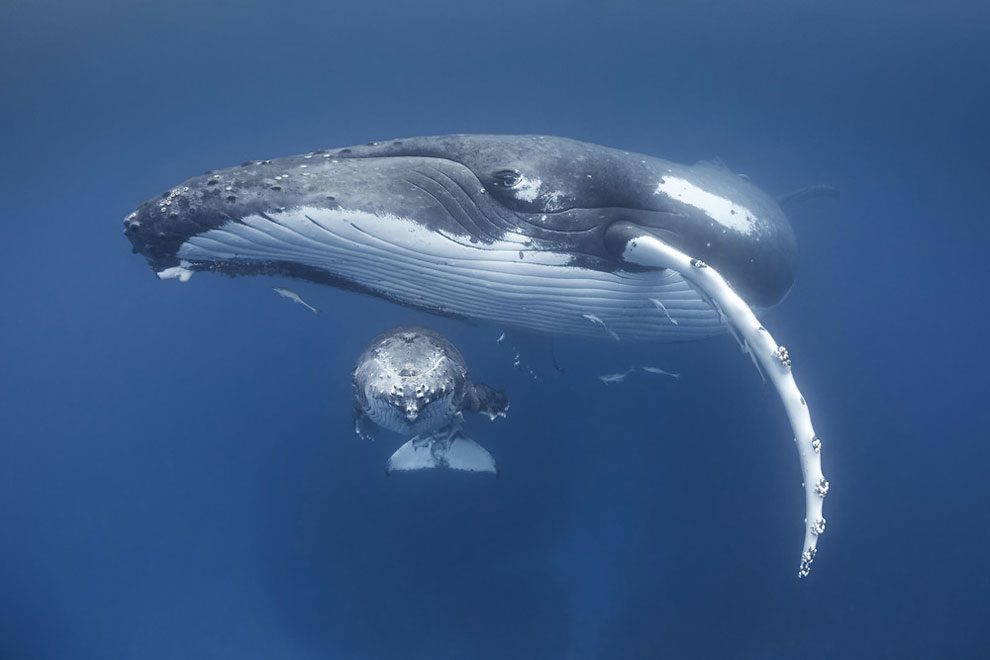
“The most important relationship in a young humpback whale’s life is the one with its mother. Juveniles depend entirely on their mothers for survival for the first 10 months or so of life. This little boy, though ever eager to play and explore, always returned to the safety and comfort of his patient and doting mother”. (Photo by Tony Wu/Wildscreen 2016)
“Measuring Up”

“After by a flood of rejuvenating rains, thousands of green tree frogs emerged upon the moonlit landscape of Australia’s Macquarie marshes to breed. These frogs were photographed after a biologist had collected and measured them, looking to understand more about the intricate relationships between amphibians and the water flows within the marshes. Because of the important role frogs play in ecosystem health, the study hoped to gain knowledge that could then be applied to help improve environmental water allocation management in the Murray Darling river basin”. (Photo by Dave Herasimtschuk/Wildscreen 2016)
“An Unexpected Guest”
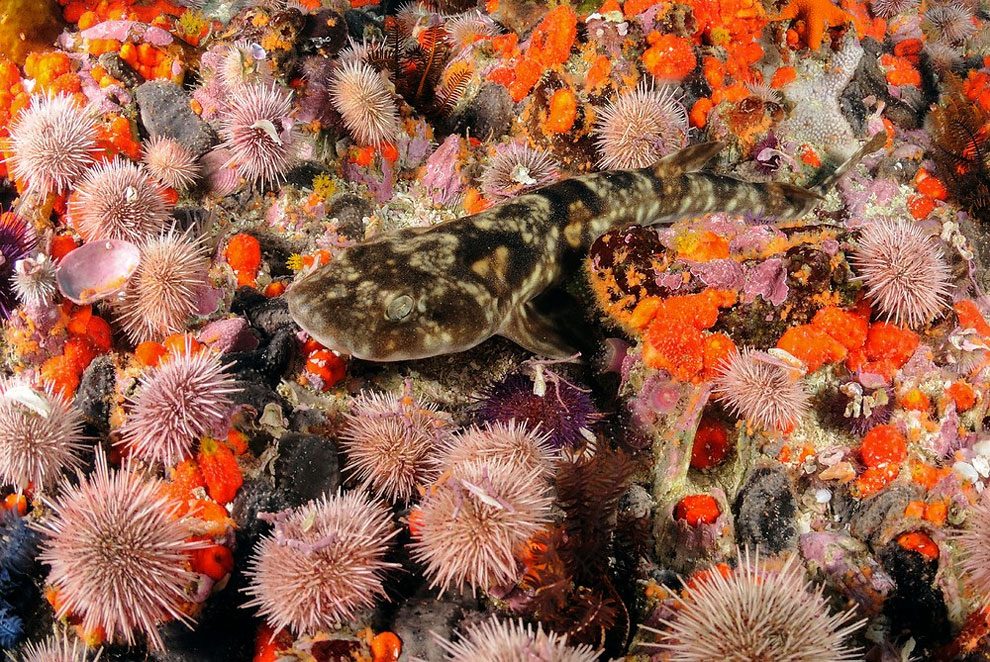
“False Bay on the southern tip of South Africa is well-known for its winter breeding season of Cape fur seals and great white sharks. Although I had arrived to photograph the whites, during periods of rough weather I spent my time diving in protected bays and was surprised to find colourful temperate marine gardens of undersea life. One of the highlights was this small puffadder shyshark, which starkly contrasted with my original photographic quarry, but reminded me of the rich diversity and form of the 450 or so species of sharks in our oceans”. (Photo by Justin Gilligan/Wildscreen 2016/Save Our Seas Foundation)
“Wild Yellowstone”

“My first assignment with National Geographic magazine was to cover the wolves of Yellowstone national park. As the winter came to an end and the ice began to break up along the Yellowstone river, a bounty of drowned bison carcasses was revealed along the shore. After a week, this alpha female (on the left) with her one-year-old offspring emerged through a blizzard and began feeding, allowing me to capture an image that I’d only dreamed possible”. (Photo by Ronan Donovan/Wildscreen 2016)